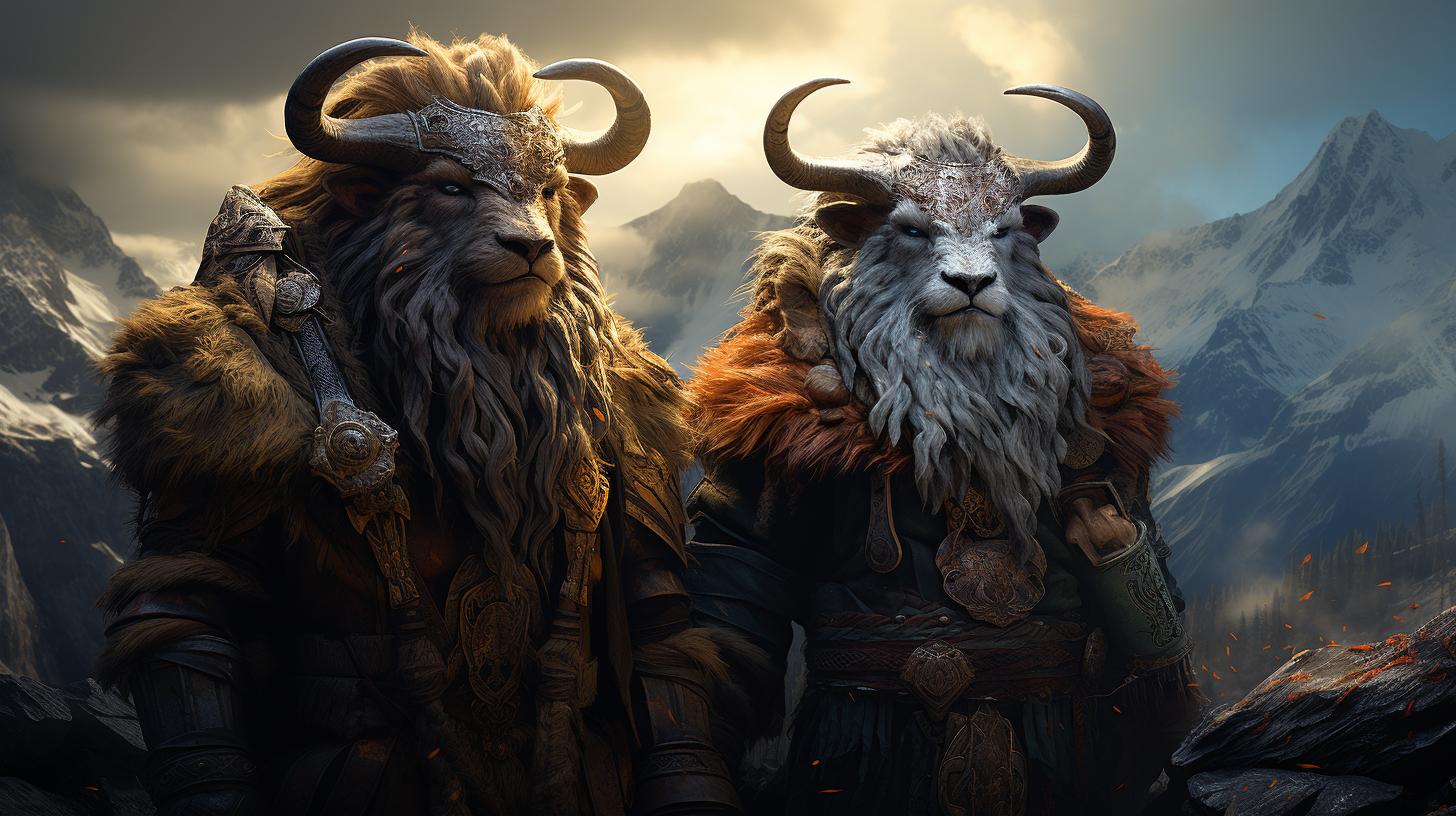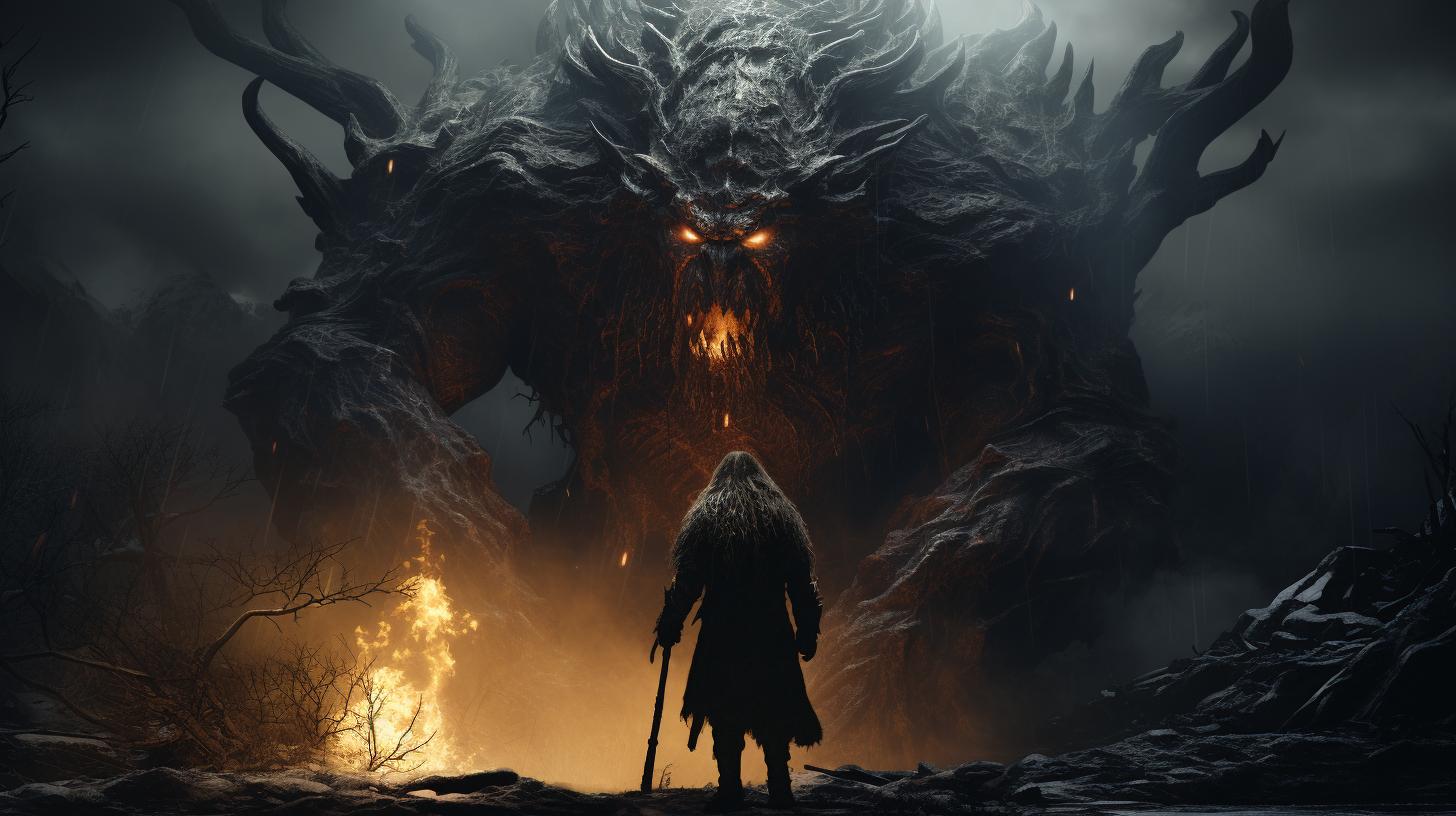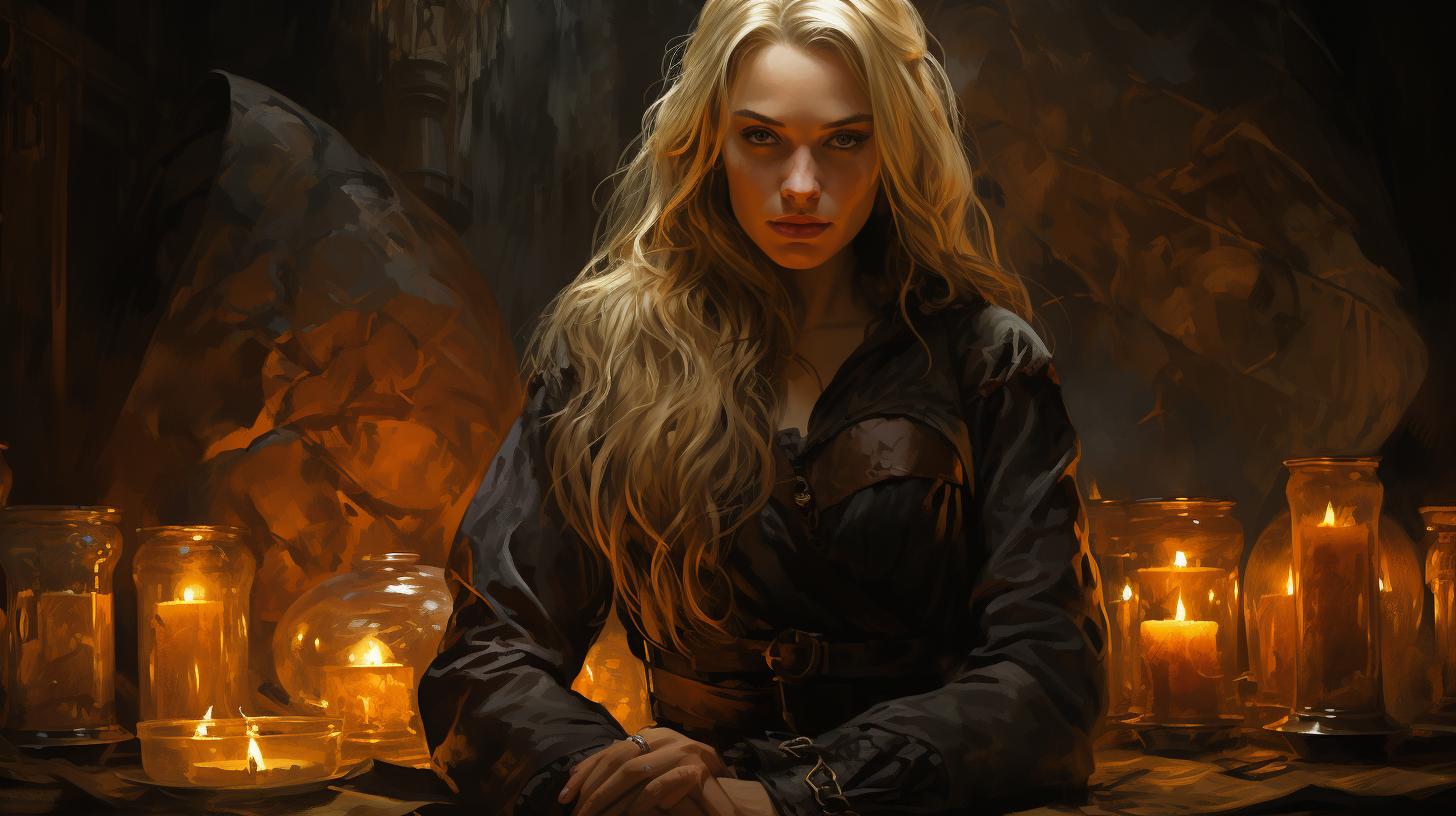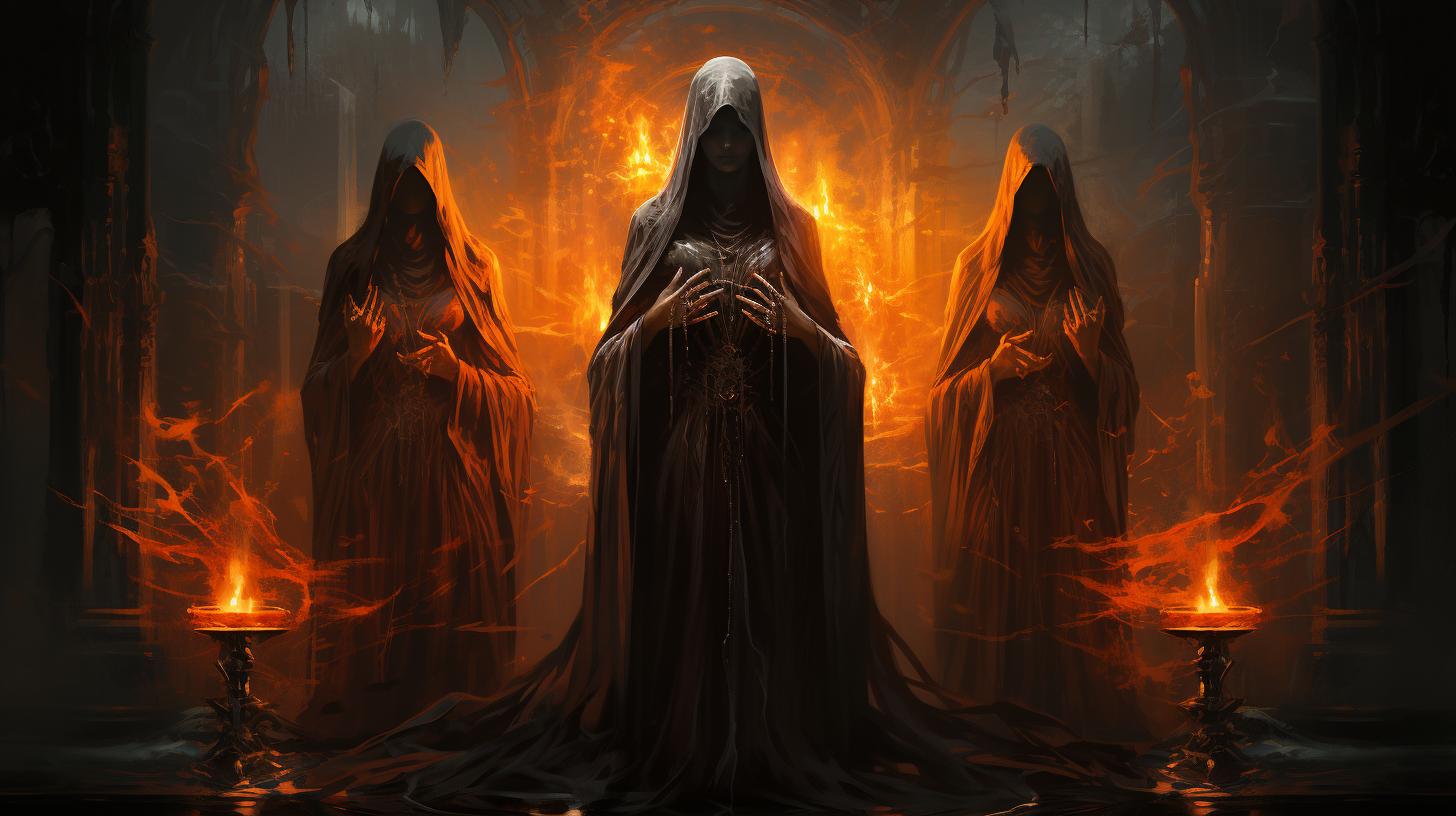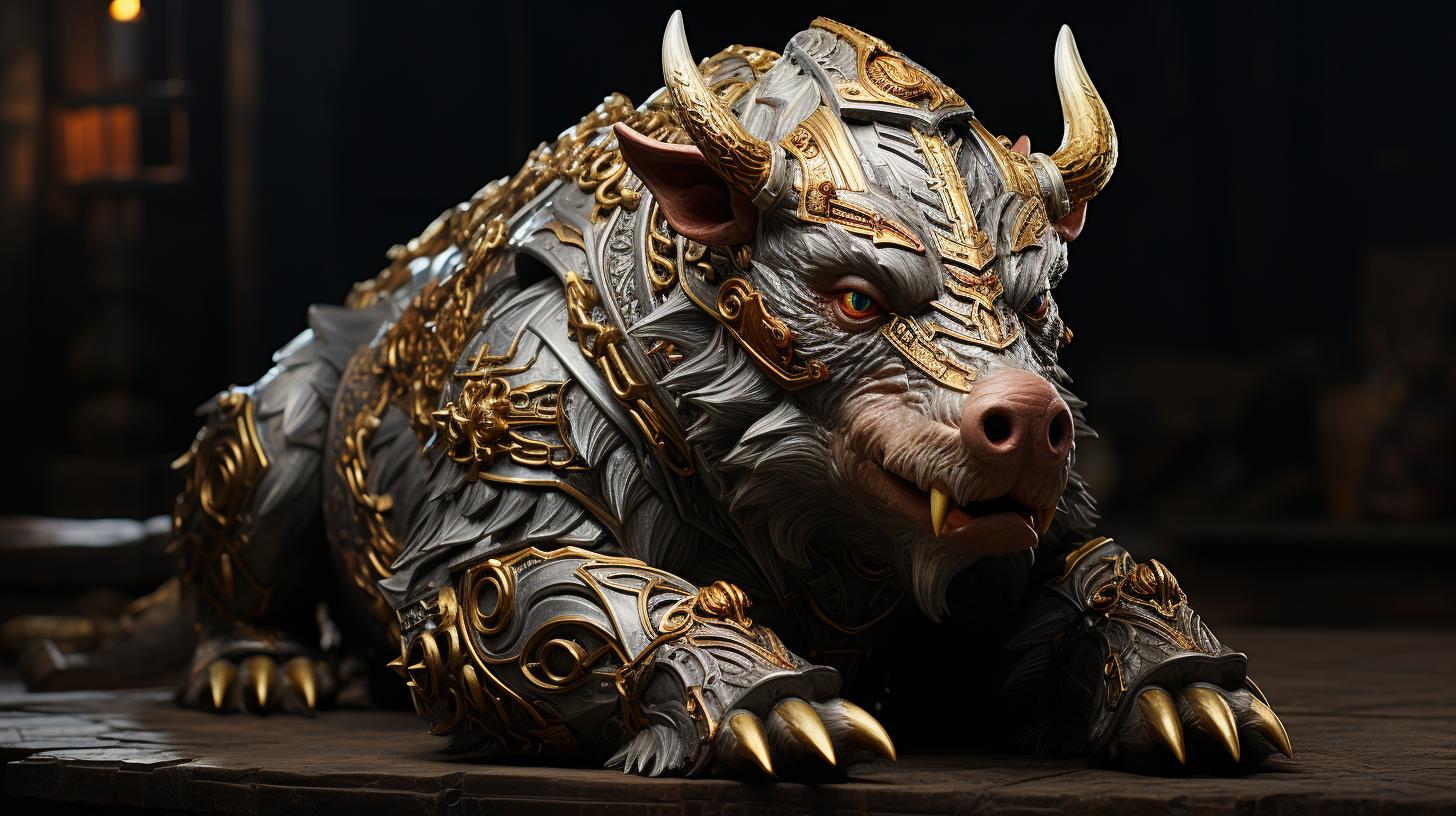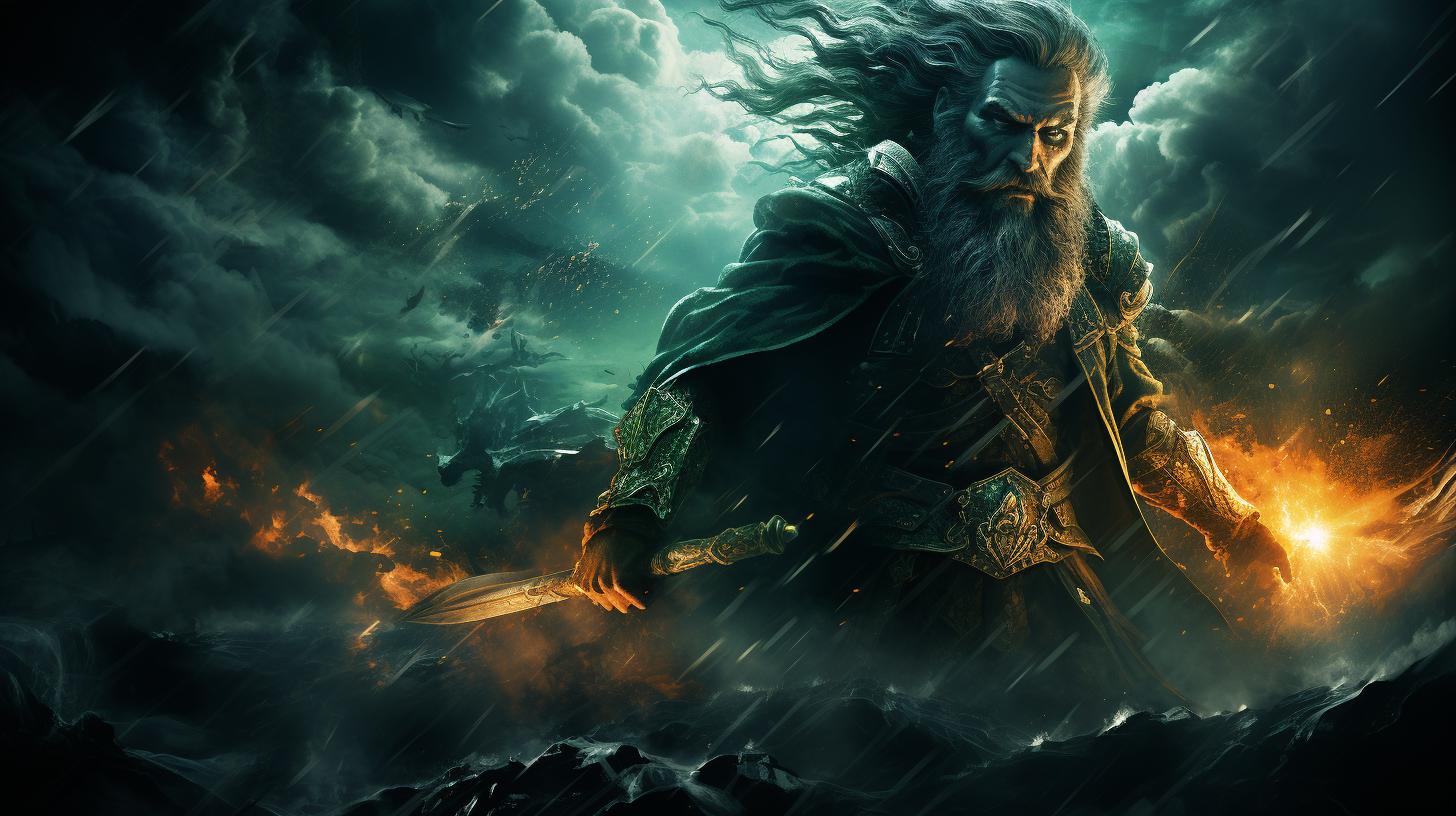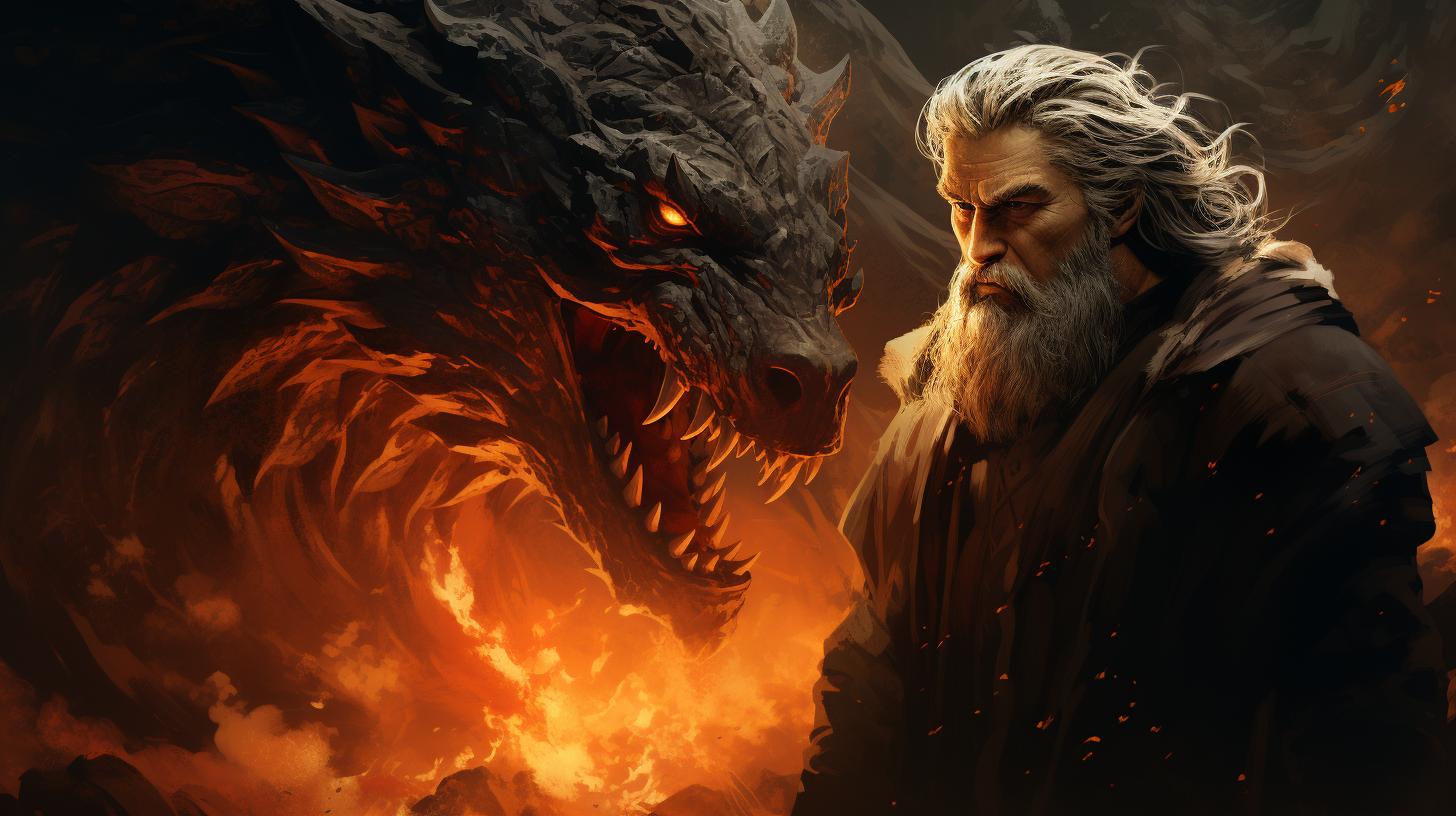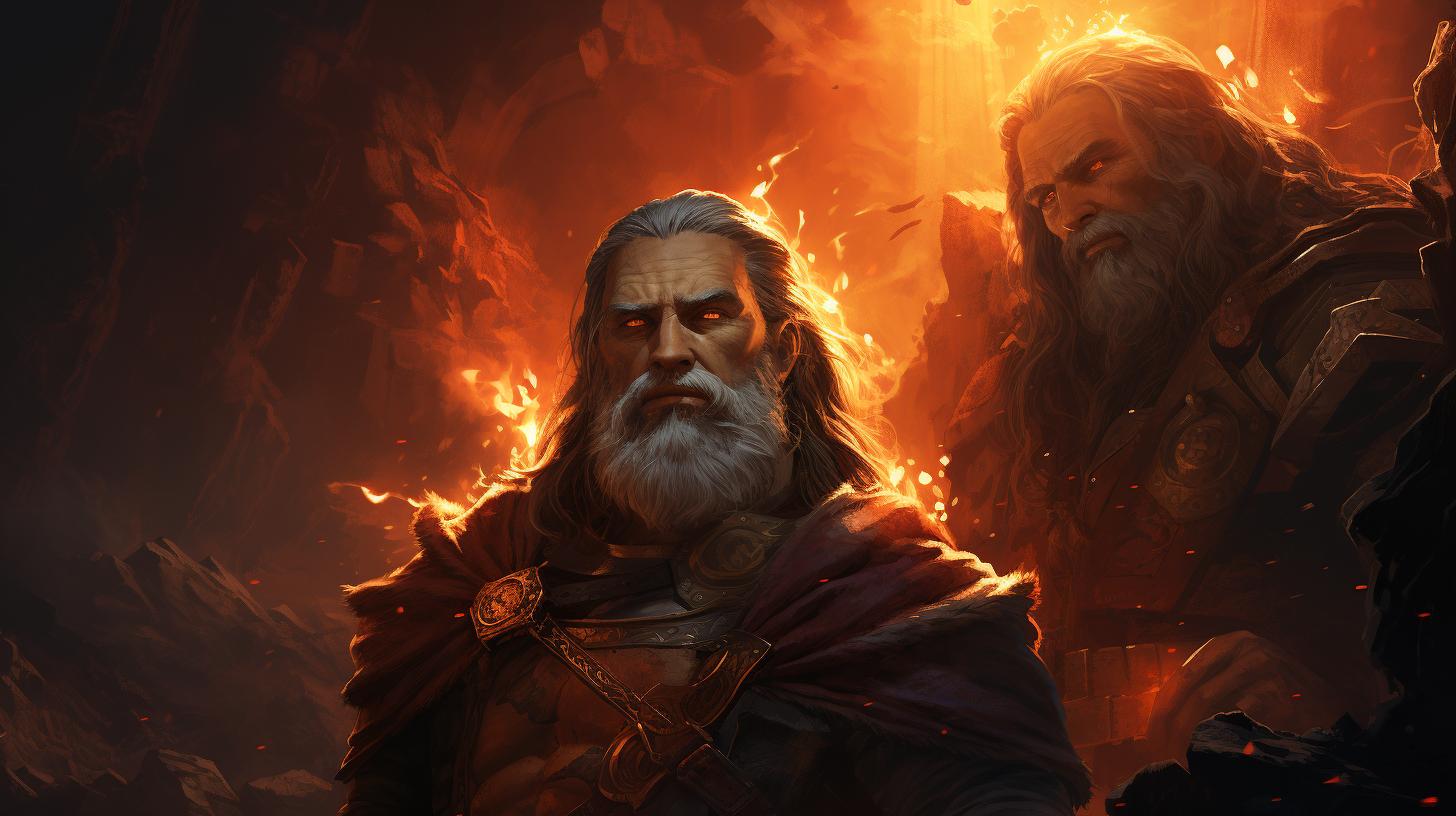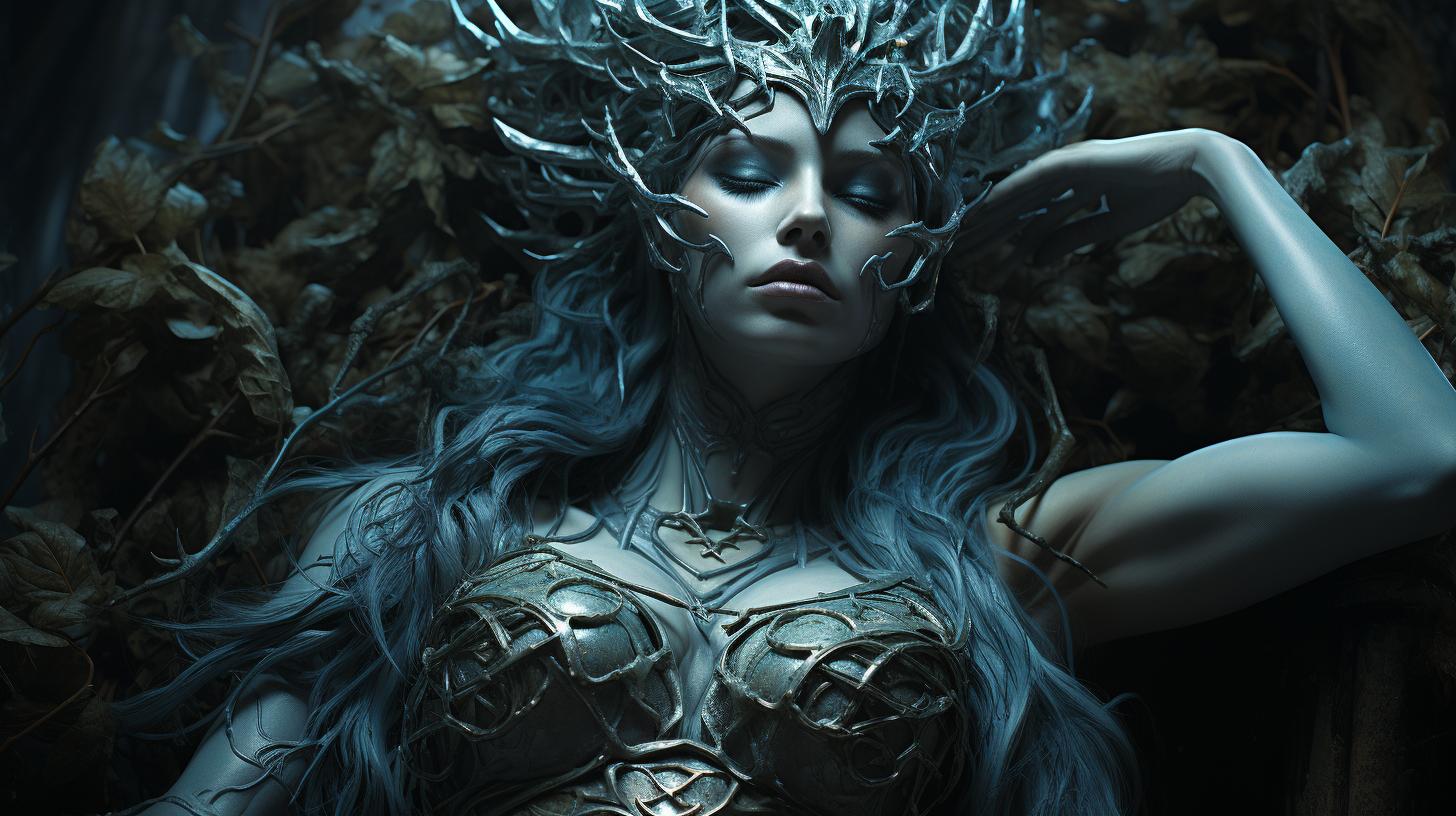Tanngrisnir and Tanngnjostr: The Divine Goats
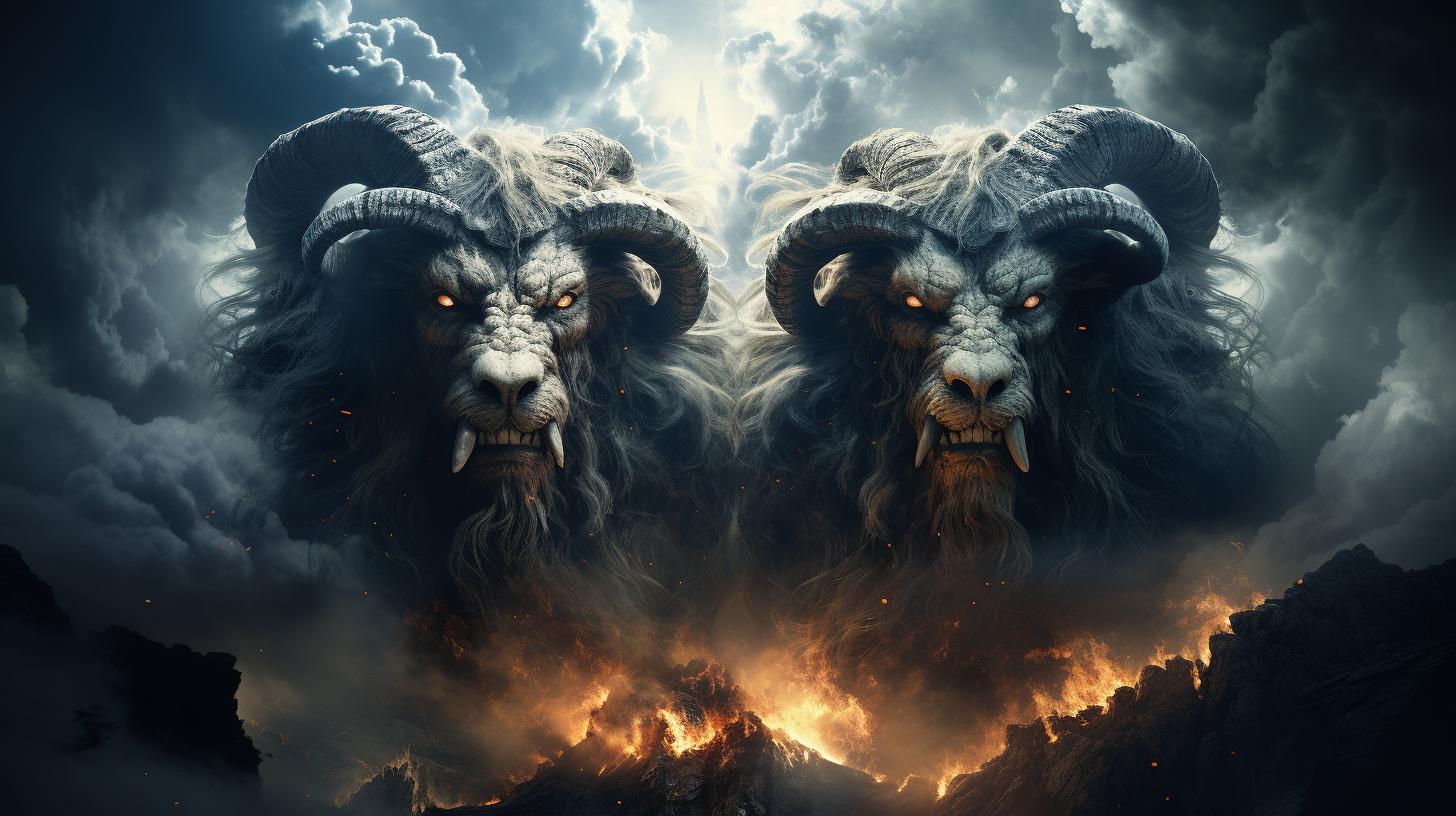
Tanngrisnir and Tanngnjostr are mythical goats in Norse mythology that play a significant role in the stories related to Thor, the god of thunder. They represent loyalty, resilience, and the warrior aspect of Thor. These goats possess the ability to resurrect after being sacrificed, symbolizing the cycle of life, death, and rebirth.
They also pull Thor’s chariot, creating thunder and lightning as they traverse the sky. Tanngrisnir and Tanngnjostr have appeared in various Norse sagas and poems, and their symbolism extends beyond mythology, representing the connection between nature and agriculture.
The Mythology of Tanngrisnir and Tanngnjostr
Norse mythology forms a rich tapestry of legends, gods, and fantastical creatures. This section provides an overview of Norse mythology, focusing on the captivating stories surrounding Tanngrisnir and Tanngnjostr. These mythical goats play a significant role in the Norse pantheon, particularly in relation to Thor, the mighty god of thunder.
Norse Mythology: An Overview
Norse mythology, originating from the ancient Germanic tribes, encompasses a vast collection of tales that have been passed down through generations. This unique belief system features a pantheon of gods and goddesses, each with their own distinct personalities, powers, and mythological roles.
Introduction to Tanngrisnir and Tanngnjostr
Among the fascinating beings in Norse mythology, Tanngrisnir and Tanngnjostr stand out as two mystical goats owned by Thor. These divine creatures exemplify the themes of resilience, loyalty, and magic within Norse folklore.
The Role of Gods in Norse Mythology
Gods hold significant importance in Norse mythology, being seen as immortal beings with extraordinary powers and responsibilities. They are often depicted as complex characters, exhibiting distinct traits and having a direct impact on the world and its inhabitants.
The Deities: Thor, The God of Thunder
Thor, known as the mighty god of thunder, holds a prominent position in Norse mythology. With his immense strength and fierce demeanor, he is greatly revered by both gods and mortals alike.
Let us delve into the powers and attributes of Thor, as well as his iconic possessions—the mighty hammer Mjolnir and his chariot pulled by the divine goats.
Thor: The Mighty God
Thor stands as one of the mightiest gods in Norse mythology. Known for his immense physical strength and bravery, he embodies the fierce warrior spirit of the gods. His character is defined by his unwavering determination, protective nature, and deep sense of justice.
As the god of thunder, Thor commands awe and respect.
Powers and Attributes of Thor
Thor possesses a remarkable set of powers and attributes that set him apart from the other gods. His thunderous voice and lightning-infused hammer strike fear into the hearts of his enemies.
He is gifted with incredible strength, which he uses to battle formidable foes and protect both gods and humanity. Thor’s ability to control the weather further exemplifies his immense power.
Thor’s Hammer: Mjolnir
One of the most iconic symbols associated with Thor is his hammer, Mjolnir. Crafted by the skilled dwarves, it is a weapon of immense power and importance. Mjolnir is not only a formidable tool in battle, but it also has the ability to unleash thunder and lightning when wielded by Thor. The hammer represents strength, protection, and the divine authority bestowed upon Thor.
Thor’s Chariot and the Role of Goats
Thor’s chariot, pulled by the divine goats Tanngrisnir and Tanngnjostr, plays a crucial role in his mythological tales. This majestic chariot allows Thor to traverse the skies, creating thunder and lightning in his wake.
The goats represent Thor’s strength and serve as symbols of resilience and loyalty. Their presence emphasizes the connection between Thor and his role as the god of thunder.
Tanngrisnir and Tanngnjostr: The Divine Goats
Origin and Symbolism of Tanngrisnir and Tanngnjostr
The origins of Tanngrisnir and Tanngnjostr are deeply rooted in Norse mythology.
These mystical goats embody symbols of resistance, magic, and loyalty. Tanngrisnir, meaning ‘bare teeth’ or ‘grumbler’, and Tanngnjostr, meaning ‘tooth-gnasher’, reflect their robust and fierce nature.
These divine creatures also bear significant symbolism in Norse culture.
Their ability to resurrect after being sacrificed represents the cyclical nature of life, death, and rebirth in Norse mythology.
The Roles of Tanngrisnir and Tanngnjostr in Norse Mythology
In Norse mythology, Tanngrisnir and Tanngnjostr play crucial roles as the faithful goats of Thor, the god of thunder. They are known for their strength and endurance, pulling Thor’s chariot across the sky, creating thunder and lightning in their wake.
These goats symbolize Thor’s warrior spirit and bravery, embodying the fierce and valiant aspects of their master. Their presence serves as a warning, signaling Thor’s imminent arrival.
Thor’s Bond with His Goats: Loyalty and Resurrection
The bond between Thor and his goats is one of loyalty and trust.
Thor has the power to resurrect Tanngrisnir and Tanngnjostr by placing their bones back into their skins and reciting a spell. This act symbolizes the unbreakable connection between Thor and his faithful companions.
The resurrection of these goats further reinforces the belief in the cycle of life and the regenerative power of the natural world. Just as the earth seemingly ‘dies’ in winter and ‘resurrects’ in spring, Tanngrisnir and Tanngnjostr’s revival represents the continuity of life beyond apparent death.
The Epic Stories: Tanngrisnir and Tanngnjostr in Mythological Texts
Edda Poetic: A Guide to Norse Mythology
In Edda Poetic, a collection of Old Norse poems, we find valuable insights into Norse mythology, including the tales of Tanngrisnir and Tanngnjostr. These poems offer a poetic and lyrical retelling of the adventures of Thor and his divine goats.
Through vivid imagery and descriptive language, the poems bring to life the resilience, loyalty, and supernatural abilities of Tanngrisnir and Tanngnjostr. The poems not only entertain but also shed light on the cultural and religious beliefs of the Norse people.
Edda Prosaic: A Comprehensive Source of Norse Legends
Edda Prosaic serves as a comprehensive source of Norse legends and myths. It provides detailed accounts of the exploits of Thor, including his close association with Tanngrisnir and Tanngnjostr. These accounts go beyond the poetic form of Edda Poetic, offering a more narrative and informative perspective on the adventures and significance of these mythical goats.
Through Edda Prosaic, readers can gain a deeper understanding of the symbolic roles Tanngrisnir and Tanngnjostr play in Norse mythology.
Tanngrisnir and Tanngnjostr in Norse Sagas and Poems
Within the broader category of Norse sagas and poems, various works feature Tanngrisnir and Tanngnjostr. These tales depict the goats as integral characters, intertwined with the exploits of Thor. Their presence in these sagas and poems highlights their central role in Norse mythology and their enduring legacy as mythological figures.
The vivid descriptions and captivating storytelling of these sagas and poems further emphasize the significance of Tanngrisnir and Tanngnjostr in the Norse mythological tradition.
- Some notable sagas featuring Tanngrisnir and Tanngnjostr include Saga of the Ynglings, where their resurrection is depicted, and the Saga of the Volsungs, where their companionship with Thor is highlighted.
- Additionally, poems like “The Lay of Thrym” and “The Lay of Hymir” offer glimpses into the epic adventures of Thor and his loyal goat companions.
These sagas and poems provide valuable narratives that contribute to our understanding of the mythological significance of Tanngrisnir and Tanngnjostr and their enduring presence within Norse culture.
Thor’s Encounter with the Peasants and the Mythical Goats
In this section, we will delve into the captivating story of Thor’s encounter with the peasants and the mythical goats, Tanngrisnir and Tanngnjostr. This event showcases the dynamic between Thor, Loki, and the unsuspecting peasants, leading to consequences and unforeseen alliances.
The Story of Thor, Loki, and the Peasants
Amid their travels, Thor and Loki find themselves seeking shelter at the humble abode of a group of peasants. In a display of hospitality, the peasants offer their meager provisions, including their precious goats, as a meal for the guests.
Breaking the Taboos: Þjálfi’s Disobedience
As the feast unfolds, Thor imposes a strict taboo on the peasants, forbidding them from breaking any bones of the goats. However, Þjálfi, one of the peasants’ children, succumbs to curiosity and disobeys this command, resulting in a broken bone and a limping goat.
Thor’s Punishment and the Acceptance of Þjálfi and Röskva
Indignant and angered by the broken taboo, Thor entrusts a punishment upon Þjálfi and his sister Röskva. They are welcomed into Thor’s service as a form of retribution for Þjálfi’s wrongdoing, forever tied to the adventures of the formidable god of thunder.
As the story unfolds, the encounter between Thor, Loki, and the peasants sets the stage for the development of characters and relationships, illustrating the consequences of disobedience and the incorporation of Þjálfi and Röskva into Thor’s entourage.
Tanngrisnir and Tanngnjostr as Symbols in Norse Culture
As mythical creatures in Norse mythology, Tanngrisnir and Tanngnjostr have a profound symbolic significance, extending beyond their roles in the stories of Thor. They represent various aspects of Norse culture and beliefs, showcasing the profound connection between humans, nature, and the cycle of life.
The Connection Between Goats and Agriculture
In Norse culture, goats held great importance as symbols of prosperity and wealth. These animals were closely associated with agriculture, reflecting the Norse belief in the interdependence of humans and the natural world.
The strength and resilience of Tanngrisnir and Tanngnjostr embody the endurance and determination required for successful farming and the ability to sustain life even in challenging conditions. The presence of these divine goats signifies the bountiful harvests and the abundance of the land.
Resurrection as a Metaphor for Regeneration in Nature
The ability of Tanngrisnir and Tanngnjostr to resurrect after their sacrifice serves as a powerful metaphor for the regenerative forces present in nature. Just as the goats come back to life, the cycle of death and rebirth is a fundamental aspect of Norse cosmology.
This symbolism reflects the belief in the cyclical nature of seasons, where the land seems to die during winter and is reborn with the arrival of spring. The resurrection of these divine creatures highlights the continuity of life beyond apparent demise, emphasizing the eternal renewal and vitality found in the natural world.
The Symbolic Representation of Resilience and Adaptation
Tanngrisnir and Tanngnjostr embody the values of resilience and adaptation, reflecting the harsh realities of life in the northern regions of Europe. The goats’ ability to withstand challenging conditions and continue their duties as Thor’s loyal companions serves as an inspiration for individuals facing adversity.
Their symbolism reminds the Norse people of the importance of staying strong, embracing change, and overcoming obstacles. In the face of hardship, Tanngrisnir and Tanngnjostr encourage the belief in the resilience of individuals and the ability to adapt and thrive in even the harshest of circumstances.
The Influence of Tanngrisnir and Tanngnjostr in Popular Culture
Tanngrisnir and Tanngnjostr, the mythical goats of Thor, have left a lasting impact on popular culture. Their representation can be seen in various forms of media, ranging from modern literature and art to popular comic books.
Tanngrisnir and Tanngnjostr in Modern Literature and Art
In the realm of literature and art, authors and artists have drawn inspiration from the legendary goats. From epic tales to contemporary novels, Tanngrisnir and Tanngnjostr have become recognized symbols of strength, resilience, and divine loyalty.
Their appearances in mythology and Norse-inspired stories have captivated audiences and contributed to the richness of these works.
Tanngrisnir and Tanngnjostr in Marvel Comics
Marvel Comics, known for its captivating superheroes and intricate narratives, has incorporated Tanngrisnir and Tanngnjostr into its vast universe. These mythical goats have made appearances alongside Thor, emphasizing their essential role in the god’s mythology.
Marvel enthusiasts can witness the power and significance of these divine creatures as they accompany Thor on his epic adventures.
The Enduring Legacy of Tanngrisnir and Tanngnjostr
Tanngrisnir and Tanngnjostr’s legacy extends far beyond ancient mythological tales. Their symbolism and powerful attributes continue to resonate with audiences today. Their representation in popular culture serves as a reminder of the timeless allure of Norse mythology and the enduring impact of these legendary goats.
Their ability to overcome adversity and embody loyalty remains an inspiration to many.
- Tanngrisnir and Tanngnjostr’s influence can be traced in literature, art, and popular media.
- They have made appearances in modern novels, showcasing their symbolic significance.
- Marvel Comics has integrated these divine goats into its captivating tales.
- Their enduring legacy speaks to the timeless allure of Norse mythology.
As our fascination with mythology and epic tales continues, Tanngrisnir and Tanngnjostr will continue to leave their mark on popular culture, reminding us of their everlasting power and presence.
Exploring Tanngrisnir and Tanngnjostr: Myths and Realities
Unraveling the Historical Origins of Tanngrisnir and Tanngnjostr
The historical origins of Tanngrisnir and Tanngnjostr have been a subject of fascination and research among scholars. Delving into ancient Norse texts and archaeological evidence, we can uncover clues about the origins of these mythical goats.
Debunking Myths and Misconceptions Surrounding the Goats
Over the years, various myths and misconceptions have emerged regarding Tanngrisnir and Tanngnjostr. It is important to separate fact from fiction and debunk these misconceptions surrounding the extraordinary abilities and role of these divine goats.
- The Sacrificial Ritual: Understanding the True Nature of Resurrection
- The Symbolism of Names: Decoding Tanngrisnir and Tanngnjostr
- Thor’s Bond with His Goats: Genuine Loyalty or Narrative Device?
The Significance of Tanngrisnir and Tanngnjostr Today
Despite belonging to ancient mythology, the significance of Tanngrisnir and Tanngnjostr continues to resonate with modern culture.
Their enduring legacy can be observed in various forms, ranging from artistic interpretations to their incorporation into popular media.
- Tanngrisnir and Tanngnjostr in Modern Literature, Art, and Media
- The Influence of Norse Mythology in Popular Culture
- The Relevance of Tanngrisnir and Tanngnjostr in Contemporary Symbolism
.

